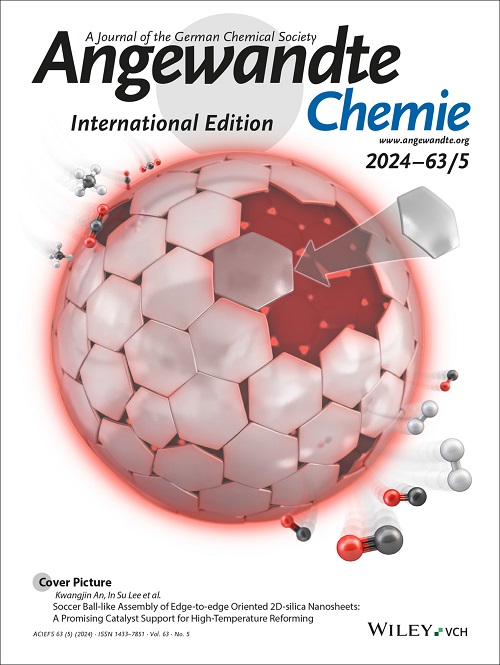Chiral Zinc Sulfide Nanoparticles Scavenging Reactive Oxygen Species for Remodeling Intestinal Homeostasis
IF 16.1
1区 化学
Q1 CHEMISTRY, MULTIDISCIPLINARY
引用次数: 0
Abstract
Elevated levels of reactive oxygen species (ROS) and gut microbiota dysbiosis are crucial factors that exacerbate inflammatory bowel disease (IBD). To address this, we successfully synthesized zinc sulfide nanoparticles (ZnS NPs) with a particle size of approximately 500 nm and a maximum g-factor of 0.07, utilizing l-/d-cysteine as chiral ligands. In vitro experiments revealed that these chiral ZnS NPs could enter macrophages through the CD44 and clathrin pathways, which enhanced the ability to scavenge ROS, in turn significantly inhibited the NF-κB and NLRP3 signaling pathways, thereby reducing the secretion of TNF-α, IL-6, and IL-1β, while upregulating IL-10. In vivo experimental data showed that l-ZnS NPs outperformed 5-aminosalicylic acid, significantly improving body weight, reducing the IBD activity index, and attenuating tissue damage, concurrently, l-ZnS NPs exhibited a marked prophylactic effect. The benchmark studies verified that l-ZnS NPs increased the abundance of the beneficial Lachnospiraceae NK4A136 by 10.55-fold and decreased harmful Enterobacter by 2914.00-fold, thereby reshaping the intestinal microecological balance. Pharmacokinetic and biosafety assessments confirmed the safety of l-ZnS NPs. Our findings indicate that chiral ZnS NPs hold great potential as nanodrugs for the treatment and prevention of IBD, providing an important foundation for the development of IBD therapeutic strategies.求助全文
约1分钟内获得全文
求助全文
来源期刊
CiteScore
26.60
自引率
6.60%
发文量
3549
审稿时长
1.5 months
期刊介绍:
Angewandte Chemie, a journal of the German Chemical Society (GDCh), maintains a leading position among scholarly journals in general chemistry with an impressive Impact Factor of 16.6 (2022 Journal Citation Reports, Clarivate, 2023). Published weekly in a reader-friendly format, it features new articles almost every day. Established in 1887, Angewandte Chemie is a prominent chemistry journal, offering a dynamic blend of Review-type articles, Highlights, Communications, and Research Articles on a weekly basis, making it unique in the field.

 求助内容:
求助内容: 应助结果提醒方式:
应助结果提醒方式:


